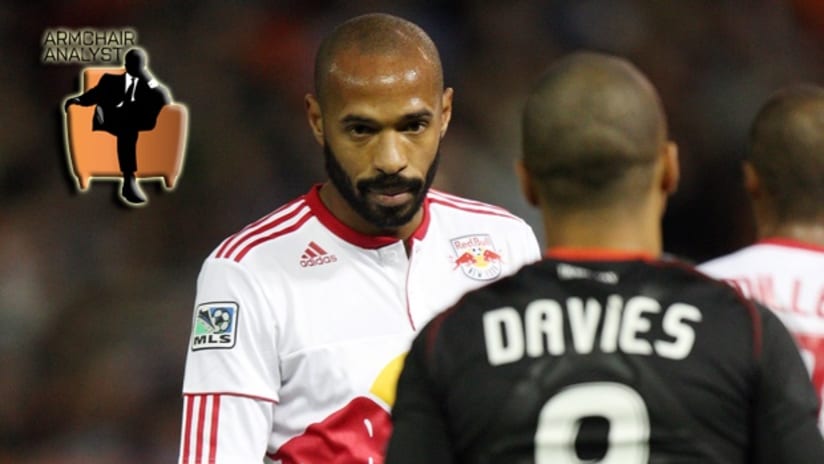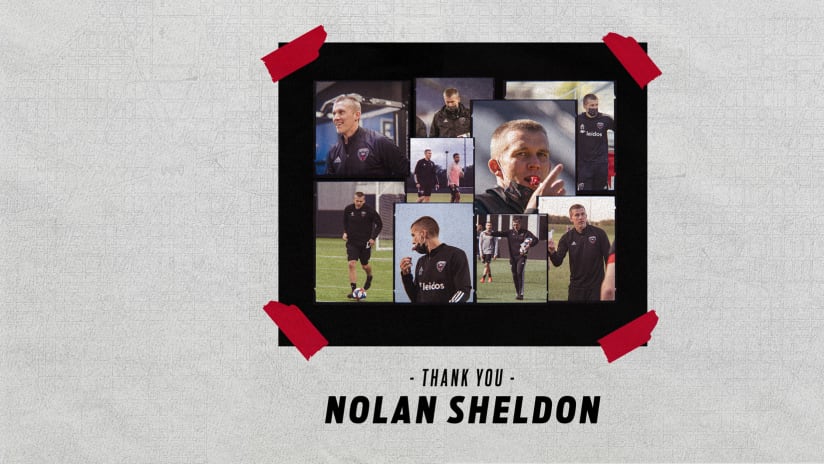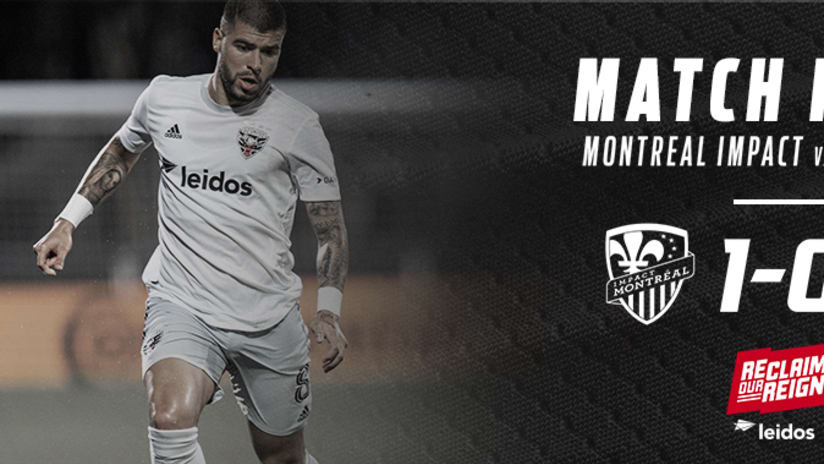The league’s oldest rivalry is, historically, a one-sided affair. D.C. United have traditionally treated New York the way a dog treats a fire hydrant, raining on NY’s parade in the regular season, playoffs, Open Cup and more.
However, the tide has been turning over the past 18 months, punctuated by the 4-0 thrashing the Red Bulls put on United back in April. It’s months ago now, and both teams look different than they did then — thanks in large part to a blockbuster trade from a few weeks back.
But the fact remains that New York have claimed the upper hand in the rivalry with three straight shutouts. How DC go about fixing that will tell a big part of Saturday’s story (7:30 pm ET, Comcast SportsNet).
The first order of business is to check out last week’s Opta Chalkboards for the teams. Not only can this give us an idea of how they’ll play, but it’ll present a straight-up comparison of Dwayne De Rosario and Dax McCarty, the central midfielders DC and the Red Bulls swapped last week.
As you’ll see, both are central midfielders, but their heat maps are vastly different.
McCarty gets the majority of his touches in the “deep-central” midfield, acting as another buffer for the back line next to Teemu Tainio and being more of a facilitator than outright creator. Defensively, all his “events” against San Jose — tackles, interceptions, recoveries — happened at the midfield stripe or in his own half. He’s there to cover ground on both sides of the ball, doing the physical heavy lifting while lightening the burden for New York’s crop of aging veterans.
Against DC it won’t be Tainio, but utility man Mehdi Ballouchy for whom McCarty will be doing the running.
The man he’ll be chasing, De Rosario, operates mostly in the attacking third. He’s active defensively — he had eight recoveries and an interception against the Union in United’s 2-2 draw — but the majority took place on the offensive side of the midfield stripe. He’s there to get the ball and transition into the attack as quickly as possible, something he can do best if he stays high up the pitch.
It exposes the DC back line and defense, and New York should be expected to pour on the offense from the first minute. The Red Bulls punished DC in April because United let opponents play: They give space in the midfield, they don’t knock foes off your runs behind the ball, and they struggle — as so many young teams do — staying compact.
DeRo doesn’t help much with that (and shouldn’t be expected to). But offensively, he fits in perfectly with DC’s fleet-footed attackers, all of whom love to get into the box and get on the end of chances, but none of whom are pure creators themselves.
So while United will probably cough up some goals, they’ll be in a better position to make some of their own than they were when these two teams met a few months back. With Ballouchy in place of Tainio and a Red Bulls team still learning to play together, there will be turnovers upon which DC can capitalize.
Staying with the heat maps, we can get an idea of who will be on the end of those turnovers and counterattacks.
Chris Pontius, for example, is listed as a left-midfielder. And for the most part, he is — staying by the touchline to give DC width in the build-up and making sure they don’t lose their shape defensively.
But we also see on the heat map that, in the final third, Pontius is as likely to get his touches in the box as he is out wide. This helps explain both the fact that he has five goals on the season and that United are desperately looking for more offensive contribution from their left backs. After all, if the left midfielder is in the box then there’s no one on the left touchline to swing a cross in.
To confirm, we can look at Daniel Woolard’s heat map vs. Philadelphia. He barely crossed midfield, and his only contributions in the final third were an unsuccessful pass toward the penalty spot and a successful back-pass. Ben Olsen has been saying all season that he needs his fullbacks more involved; the Chalkboard shows exactly why he feels that way.
Balancing Pontius is Honduran wunderkind Andy Najar, who’s less of a goalscorer but still not a pure creator. And behind Najar is right back Perry Kitchen, a solid but unspectacular defender who’s still learning a fullback’s role. Like Woolard, he’s not a huge threat to get to the touchline and swing in a cross.
That’s why De Rosario is key. Woolard and Kitchen may eventually become attacking assets, but that’s the kind of thing that takes years to develop rather than weeks. In the meantime, DC aren’t going to worry (as much) about getting offense from the fullbacks; instead they’ll rely on quick-hitting counters that start at the feet of their Canadian maestro.
The other interesting option for United is playing rookie forward Blake Brettschneider in place of either Josh Wolff or Charlie Davies. Brettschneider rates high on the “McBride Scale” — he’s a big, strong, back-to-the-goal No. 9 who has great vision and creativity. He’s also very good on set-pieces, a noted weakness for New York.
The problem is that Brettschneider rates low on the “Twellman Scale.” He doesn’t particularly exude a hunger to score. While Wolff is profligate and Davies is still rounding into shape, both constantly put pressure on the back line with their activity and aggressiveness in the attacking third.
But will it even matter? Let’s face it: This is a good matchup for New York. The Red Bulls dominate teams that give them space; in MLS, only Toronto FC concede as much as United. And we all saw what New York did to them at midweek.
Add in what appears to be a fully fit and functional front line of Thierry Henry and Luke Rodgers, and it’s hard to see DC reclaiming the upper hand this weekend.
Matthew Doyle can be reached for comment at matt.doyle@mlssoccer.com and followed on Twitter at @MLS_Analyst.





